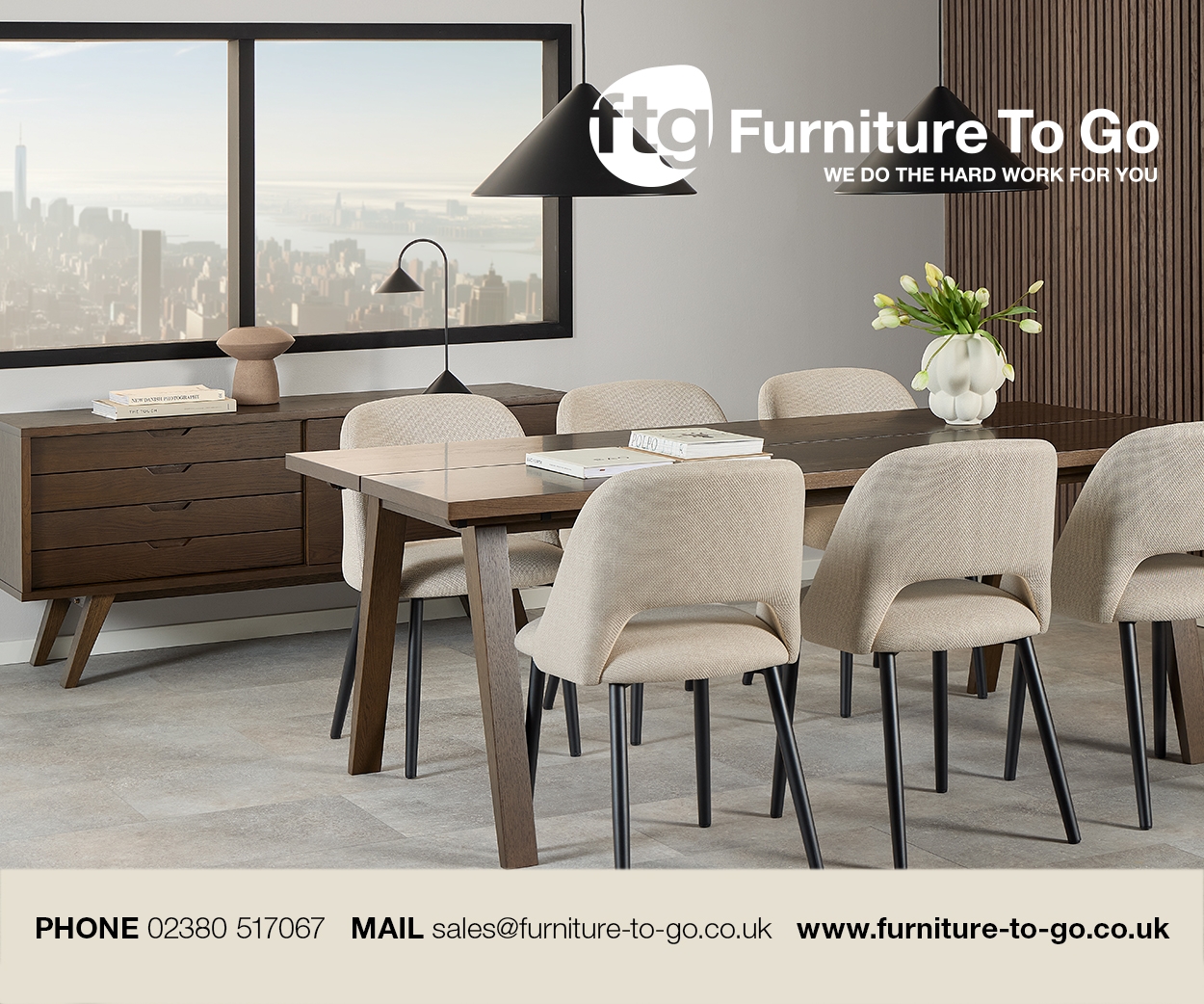In September 2016, Sainsbury’s completed its £1.4b acquisition of Home Retail Group’s Argos and Habitat businesses, making it the UK’s largest non-food retailer. The merging of supermarket chain and digital catalogue specialist has delivered good results for the parent company, vindicating its choice to evolve and bring Argos’ extensive lines closer to the consumer through one of the biggest shop-in-shop experiments the UK has ever seen. But what’s next? Sainsbury’s Argos trading director, John Tranter, gives Paul Farley the lowdown on this multichannel monster …
’Twas the night before Black Friday, and all through the house, the finishing touches are being put to one of the year’s biggest promotional opportunities. For Argos in particular, the sales spectacular is a big deal – digital fulfilment has long been a crucial part of its DNA (its previous CEO called for a digital high street “revolution”), and with consumer favour inexorably shifting towards everything omnichannel, its new family is well placed to reap the rewards.
It’s hard to put the group’s offer in perspective – suffice to say that its customers are well and truly spoilt for choice. Over 90,000 branded and own-brand products are available across the Sainsbury’s, Argos and Habitat clothing and general merchandise portfolio.
Furniture is a key category within this immense offer, says John Tranter, who has worked within Argos for over 15 years, covering various divisions including buying, merchandising and business development, and working within both branded and own-brand categories.
More recently, John spent six years in the online division of Sainsbury’s, where he worked on category management before going on to lead the formation of the newly-merged group’s commercial strategy.
Few are better equipped to offer a perspective on the retail giant, which is taking significant steps to reinvent itself from the inside out.
Behind the book
As Sainsbury’s Argos’ trading director for Home, Furniture, Events and Papershop, John now heads up the design, buying and merchandise teams across both brands. “Over recent years the furniture ranges have changed a lot,” he says. “Argos Home now offer a huge range of stylish, good quality, great value products, which we’re constantly improving.”
Recent successful lines include Nomad, a whole-home collection which taps into industrial styling with an oak-effect finish and metal accents, and includes complementary soft furnishings. “We also launched our market-leading [100-night] sleep guarantee on our mattresses, which has had an amazing response from customers,” comments John.
The upcoming Argos Home spring/summer 2019 collection offers furniture and home accessories that draw inspiration from across the globe – from Stockholm Spring’s Scandinavian simplicity to the seaside feel of Coastline, and embracing outdoor furniture components, the key trends show that this retailer is not afraid to express its creativity.
The new Sainsbury’s Argos lines are developed by an in-house team of 24 designers, based in Milton Keynes. This creative hub combines expertise from both camps, sharing best practice techniques and trend knowledge to ensure the results are sympathetic to each brand.
And there’s no shortage of fresh thinking, either, as the team is regularly bolstered by new trainees. These are often sourced in partnership with the New Designers exhibition, which takes place in London each summer, and many rapidly come to occupy important roles in the business. “We now have six new designers starting their careers with us,” says John.
This increasingly self-sufficient approach to product development mirrors the changes taking place at a procurement level. “We are sourcing more now from the UK and Europe,” reveals John. “Indeed, over a quarter of our upholstery, lounge and dining furniture is sourced from the UK, and we are always keeping a look out for good new suppliers.”
Last year, the retailer introduced a new buying and merchandise structure across every category, bringing it more closely into line with how the rest of the market operates. “Implementing this new structure will allow greater focus on both product development and financial planning, both internally and with our key partners,” says John. “I should mention that we’re focused on working with all our partners to develop and implement joint business plans wherever possible.”
Formatting for the future
As far back as 2015, Sainsbury’s was working in partnership with Argos’ owner, Home Retail Group, to trial a number of concessions in its superstores. With the acquisition in 2016, Sainsbury’s had carte blanche to expand on this now-proven model, exponentially broadening Argos’ physical footprint while making the most of its capacious superstore estate.
At the time of our conversation, there are 250 Argos stores inside Sainsbury’s supermarkets, plus more than 1000 collection points in Argos and Sainsbury’s stores.
“Our hypothesis was that the co-location of brands within a destination environment would make customers’ lives easier, enabling them to order non-food products from Argos which they could collect at the same time as doing their weekly food shop,” says John. “Ultimately, the introduction of Argos stores in Sainsbury’s supermarkets has proved extremely popular with customers, increasing footfall and boosting sales in the supermarkets overall, and we’ve committed to reaching a total of 280 Argos stores in Sainsbury’s supermarkets by March 2019.”
Thanks to the appeal of a well-oiled Click & Collect service, 80% of all Argos orders are fulfilled in-store – despite the retailer offering a market-leading Fast Track delivery service to more than 90% of the UK’s postcodes, seven days a week, with home delivery in as little as four hours on any orders placed up to 10pm. While most retailers would rather temper consumer expectations around product delivery, Sainsbury’s Argos is truly pushing the envelope.
Given this astounding fulfilment proposition, it’s surprising that the majority of Argos’ customers choose to end their buying journey in-store – but this multichannel model is all about convenience, however and wherever people choose to shop. Clearly, many people still prefer to make the short journey to collect at a time of their choosing than to wait at home for a delivery – no matter how fast it’s turned around.
Another of the retailer’s sizeable investments in physical touchpoints is its new 67,000 sqft concept superstore in Selly Oak near Birmingham, which opened on 21st November last year. A hybrid of supermarket and department store that’s been some 10 years in the making, the Sainsbury’s store fully integrates the Argos and Habitat concessions in an all-encompassing destination, complete with a food court, a new cosmetics department and the retailer’s first Oasis clothing concession.
“It’s the first time the brands have been displayed in this way in-store, and the reaction from both customers and colleagues has been fantastic,” enthuses John.
Digital directions
The Selly Oak superstore presents roomset displays featuring home products from both brands. Customers inspired to explore these looks further can browse the wider ranges on the many Argos digital order terminals positioned throughout the store.
John describes Sainsbury’s Argos as a “digitally-led business”, and these are just one example of a (relatively well-established) piece of in-store technology that aims to make the shopping experience more convenient. More radical is the retailer’s launch of Voice Shop with Google – a UK first – which allows customers to check availability for and reserve product from a 20,000-strong catalogue by speaking to the Google Assistant chatbot on their personal devices.
“We recognise the importance of future-proofing our business,” John explains. “Around 60% of our business today starts online, and over 70% of those sales are on mobile devices – and this is continuing to grow. That’s why we’re investing heavily in tech to ensure we’re at the forefront of retail technology, using innovative technologies such as Augmented Reality (AR), Machine Learning and Voice to improve the way our customers shop with us.”
Never one to shy away from new ways of selling to better meet emerging consumer demands, Sainsbury’s could soon find its ambitions stretched to the limit, as the March deadline for the CMA’s final verdict [now due on 30th April] on its proposed acquisition of Asda approaches.
Whatever the likely outcome, there’s no standing still when you’re operating at this level. “Last year was the toughest in retail for the last 25 years, and, like other retailers, we’re facing some hefty challenges – reduced consumer spending, shrinking markets in some product categories, the rapid growth of discounters and the ongoing dominance of Amazon,” John concludes. “But, I’m pleased to say, we’re performing really well – we’re growing market share and outperforming the market.”
This article was featured in the January 2019 issue of Furniture News magazine. Today, the CMA rejected the proposed merger between Sainsbury's and Asda.









